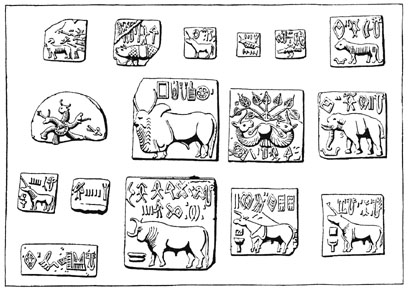

 | Page 656 |  |
The second phase of Indus studies began in 1947 when Wheeler published the results of his excavations at the western mound of Harappa in 1946. The main achievement of this work was that a major Indus civilization site came to be bracketed between earlier and later occupations. Wheeler also argued that the Indus civilization was ruled by “priest-kings,” had a military character in the form of defense walls, and eventually fell to the Aryan invaders whose archaeological evidence he claimed to have found in Cemetery H ware at the site. In 1950, in his new capacity as the archaeological adviser to the government of Pakistan, Wheeler outlined the fortification wall of the western mound of the site and argued for the presence of a granary among its building complexes.

Seals of the Indus Valley culture
(Image Select)
In 1953, Wheeler published the first edition of The Indus Civilization, a work that in two major ways marked a significant departure from the earlier analysis of the civilization by Marshall. First, its chronology was brought down to 2500–1500 b.c. Assuming that evidence of its contact with Mesopotamia went back only to the Sargonic period (c. 2300 b.c.) and that its end coincided with the assumed date of Aryan invasions to India around 1500 b.c., the Indus civilization, instead of being roughly a contemporary of the Sumerian antiquities of Mesopotamia, as in Marshall’s analysis, became one of its late contemporaries. Second, Wheeler argued that the idea of civilization in the Indus Valley was derived from Mesopotamia. This idea was a complete turnaround from those of Marshall’s days and marked the beginning of a trend that has only been reinforced by the writings of a large number of Western scholars who have recently worked between iran, the Gulf, and the Indus.
In India, this phase was marked by a great number of discoveries in the Ghaggar-Drishadvati system in Rajasthan-Haryana and Gujarat. This was also the time when the easternmost point in the distribution of Indus sites was traced at Alamgirpur in Uttar Pradesh near
 |  |